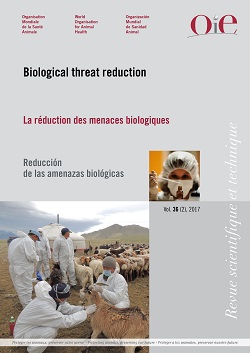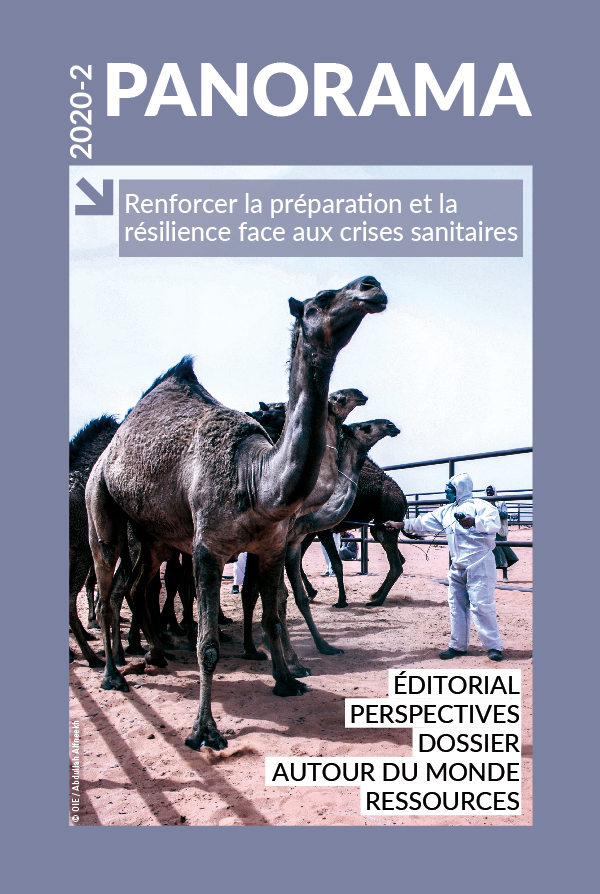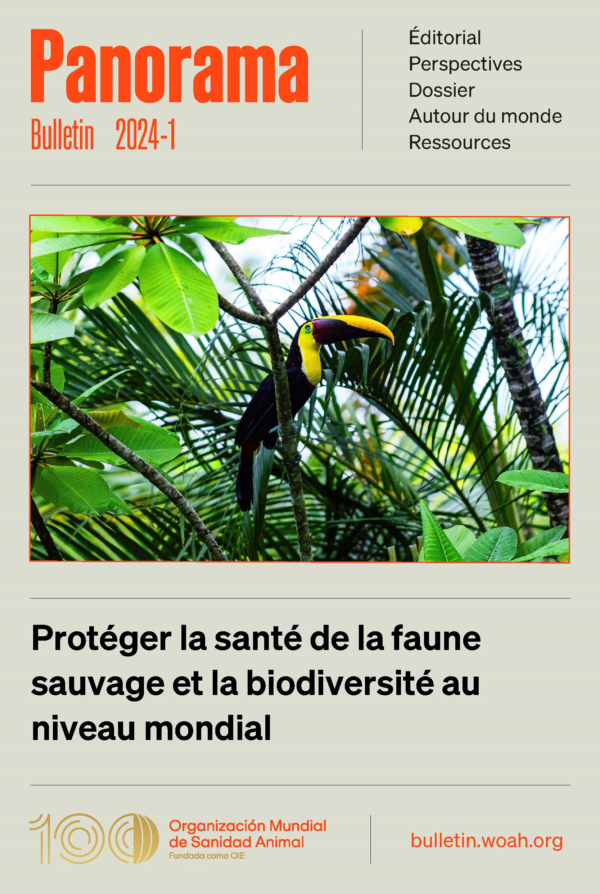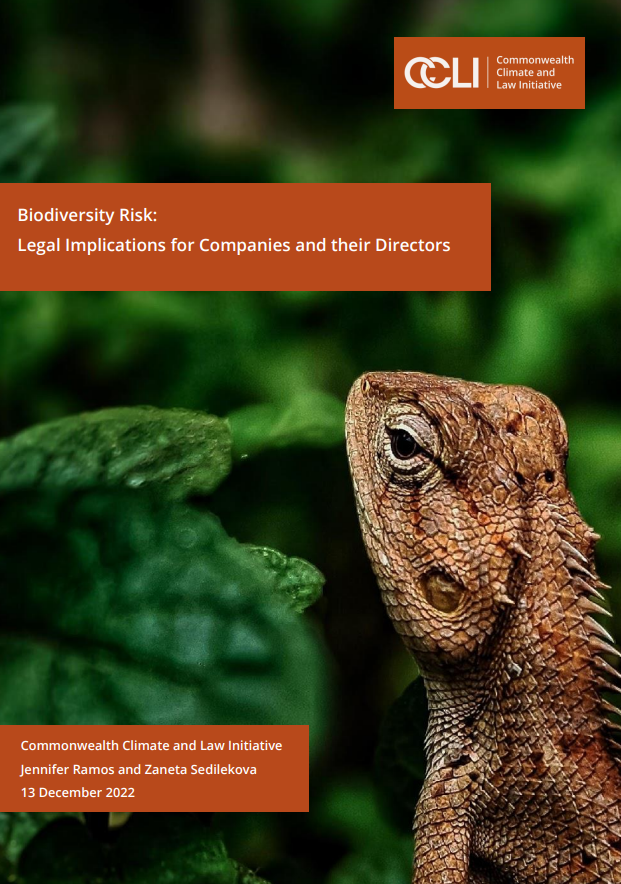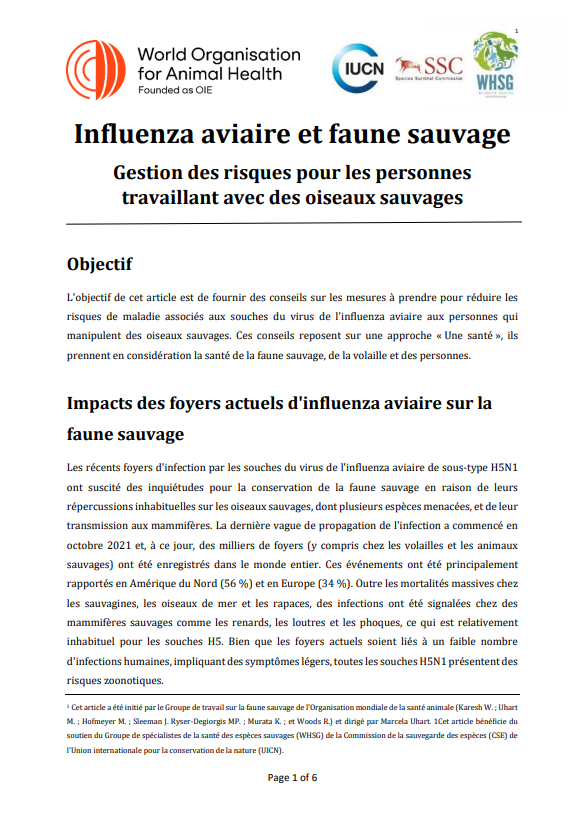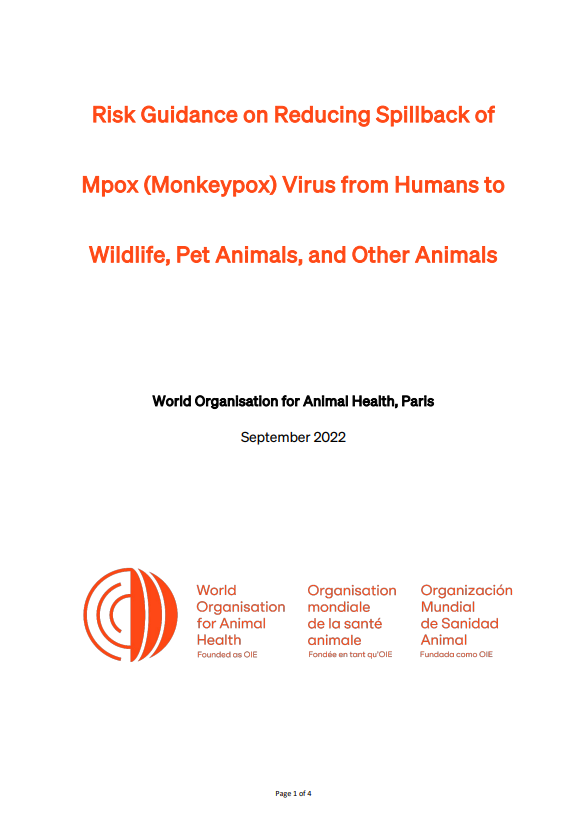Mots-clés
Revue scientifique et technique, Vol. 36 (2)
Coordination et édition : Tammy Beckham
Organisation mondiale de la santé animale (OIE)
Août 2017
348 pages
ISBN : 978-92-95108-31-8
Ce numéro de la Revue scientifique et technique fait le point sur les agents pathogènes spécifiques aux animaux, ou transmissibles des animaux aux humains, utilisés en tant qu’armes biologiques. Après un rappel historique concernant les armes biologiques au fil des siècles, l’ouvrage passe en revue les tendances et les menaces actuelles ; il examine également les possibilités d’utiliser les animaux terrestres ou aquatiques en tant que sentinelles pour détecter l’apparition de foyers dans les populations animales ou humaines, quelle que soit la cause de ces foyers (naturelle, accidentelle ou intentionnelle). Cet ouvrage cherche également à évaluer les effets que les agents pathogènes d’origine animale ou zoonotique peuvent avoir sur l’économie, sur les équilibres sociaux, sur la sécurité alimentaire et sur la santé publique. Il présente ensuite les dispositifs élaborés actuellement au niveau international pour faire face aux attaques biologiques et explore les mécanismes des Nations Unies en cas d’allégation d’utilisation d’armes biologiques. Enfin, il résume les dernières avancées technologiques en matière de détection précoce, de surveillance et de réaction en cas d’événement sanitaire. Il s’achève sur un examen des systèmes visant à renforcer la biosûreté et la résilience mondiales et sur des considérations relatives aux méthodes permettant de pérenniser ces systèmes.
[ Commander l’ouvrage imprimé ]
Index :
- Préface – Biological threat reduction
- Introduction – Biological threat reduction
- A brief history of biological weapons programmes and the use of animal pathogens as biological warfare agents
- Animal pathogens and their impact on animal health, the economy, food security, food safety and public health
- Biological threats from a ‘One Health’ perspective
- Biosafety and biosecurity in veterinary laboratories
- Biosurveillance: a systematic review of global infectious disease surveillance systems from 1900 to 2016
- Comparing responses to natural, accidental and deliberate biological events
- Emerging infectious disease risk: shared drivers with environmental change
- Engaging scientists and veterinarians in strengthening biosecurity systems
- Genome editing as a national security threat
- International health threats and global early warning and response mechanisms
- Les pays en développement face aux menaces biologiques : le cas de la République d’Haïti
- Linking animal diseases and social instability
- Links between law enforcement and veterinary animal health: a case study of the United Kingdom and the United States of America
- L’importance des normes intergouvernementales dans la réduction des menaces biologiques liées à des actes accidentels, naturels ou délibérés
- OIE twinning programme for veterinary education
- Preparedness activities and research needs in addressing emerging infectious animal and zoonotic diseases
- Rinderpest eradication: challenges for remaining disease free and implications for future eradication efforts
- Rinderpest experience
- Strengthening good governance: exploiting synergies between the Performance of Veterinary Services Pathway and the International Health Regulations (2005)
- Sustainability and economic investments in animal health systems
- Technological advances in veterinary diagnostics: opportunities to deploy rapid decentralised tests to detect pathogens affecting livestock
- Technologies for capturing and analysing animal health data in near real time
- The Biological Weapons Convention
- The Global Health Security Agenda and the role of the World Organisation for Animal Health
- The World Organisation for Animal Health and the World Health Organization: intergovernmental disease information and reporting systems and their role in early warning
- The role of climate change in a developing threat: the case of bluetongue in Europe
- United Nations Secretary-General’s Mechanism
- Viral discovery as a tool for pandemic preparedness




